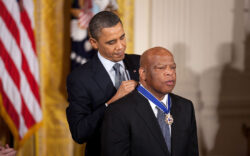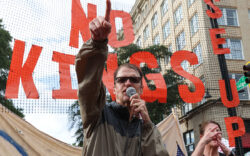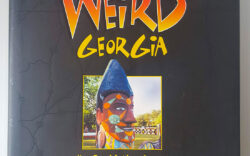Eastside, westside, all around the town, hundreds of thousands of peace marchers thronged the sidewalks, streets and parks of New York on June 12, 1982. The massive rally against the nuclear arms race happened 40 years ago, but its aims and issues still have relevance for our world four decades later. Today the world worries that Russia’s Vladimir Putin could use a nuclear weapon during his ongoing invasion of Ukraine, a scenario that could escalate into a wider war or even atomic armageddon.
In 1982, when a record-breaking crowd of more than a half million people marched through New York City in a miles-long parade for peace, six nations had tested atomic weapons, and Israel was widely viewed as a seventh member of the “nuclear club.” Pakistan joined the club in 1998, and North Korea began tests of its own atomic weapons in 2006. The “nuclear freeze” rally in New York 40 years ago focused mostly on the arms race between the United States and what was then the Soviet Union. Today tensions between the United States and Russia still simmer, and nuclear weapons technology has proliferated to other countries.
At the time of the 1982 march in New York, I was a writer for the weekly Athens Observer newspaper. I had covered large political rallies before, but the New York march is one that still stands out in my memory. Speaking to the movement multitude that filled New York’s Central Park, Coretta Scott King, widow of slain civil rights firebrand Martin Luther King Jr., said, “Thank God we’ve come here in such large numbers. We call upon the United States and the Soviet Union to lead the way in nuclear disarmament.” Activist and physician Helen Caldicott told her audience, “Don’t believe what the politicians are saying. Watch what they do.” Actor Orson Welles said, “We have two choices: life or death.”
Music has long been a mainstay in social movements, and that was true at the massive rally in New York in 1982. Musicians Linda Ronstadt, James Taylor, Jackson Browne, Holly Near and Afrikan Dreamland performed on the Central Park stage, as did longtime political singers Pete Seeger, Joan Baez and Peter, Paul and Mary. The size of the crowd in New York City in 1982 eclipsed the size of the crowd at the fabled Woodstock music festival in 1969. NYPD cops seemed to enjoy their duty at the peace rally 40 years ago, and no arrests were made at the event, even though its size was larger than the population of most U.S. cities. As we marched into Central Park, a smiling young park ranger shouted to the crowd, “You really have kept this a peace march, the largest ever.”
New York Parks Commissioner Gordon Davis said the marchers in 1982 were “the essence of the best and most decent people in this country.” Cleaning up the park after the massive rally took less time than anticipated, since many of the people who attended the event later pitched in and helped pick up what a New York Sanitation Department spokesman called “good intellectual garbage, not your usual beer cans.”
Forty years ago in New York City, protesters, police officers and people on the streets saw a spectacle that many of them must still remember fondly all these decades later. The June 12, 1982 peace rally spotlighted the specter of nuclear war that still haunts us today. It underlined the truth of words spoken by World War II Army Gen. Omar Bradley in 1948, words that still ring true in this frightful year of 2022: “The way to win an atomic war is to make certain it never starts … The world has achieved brilliance without wisdom, power without conscience. Ours is a world of nuclear giants and ethical infants. We know more about war than we know about peace, more about killing than we know about living.”
Like what you just read? Support Flagpole by making a donation today. Every dollar you give helps fund our ongoing mission to provide Athens with quality, independent journalism.









